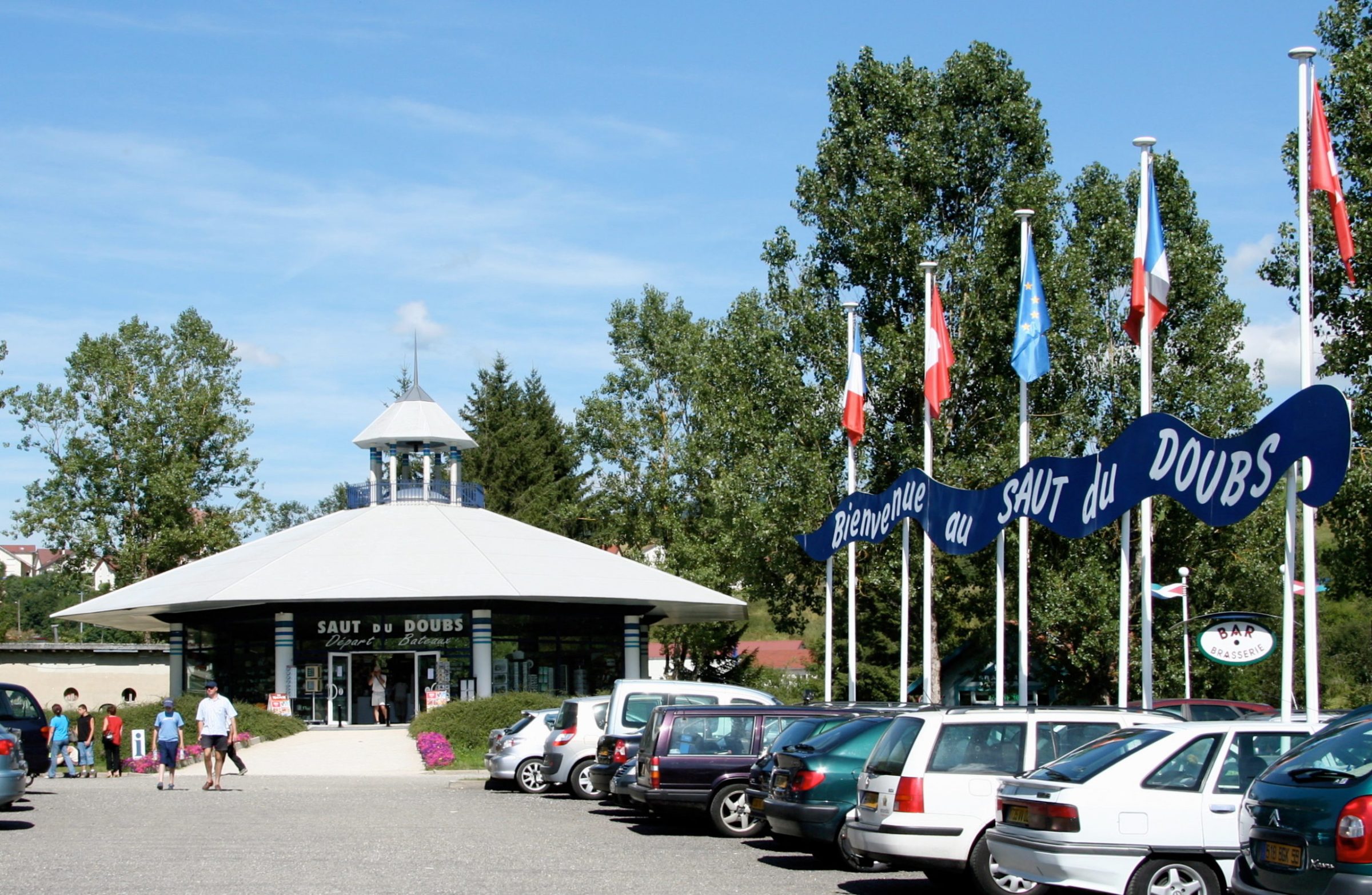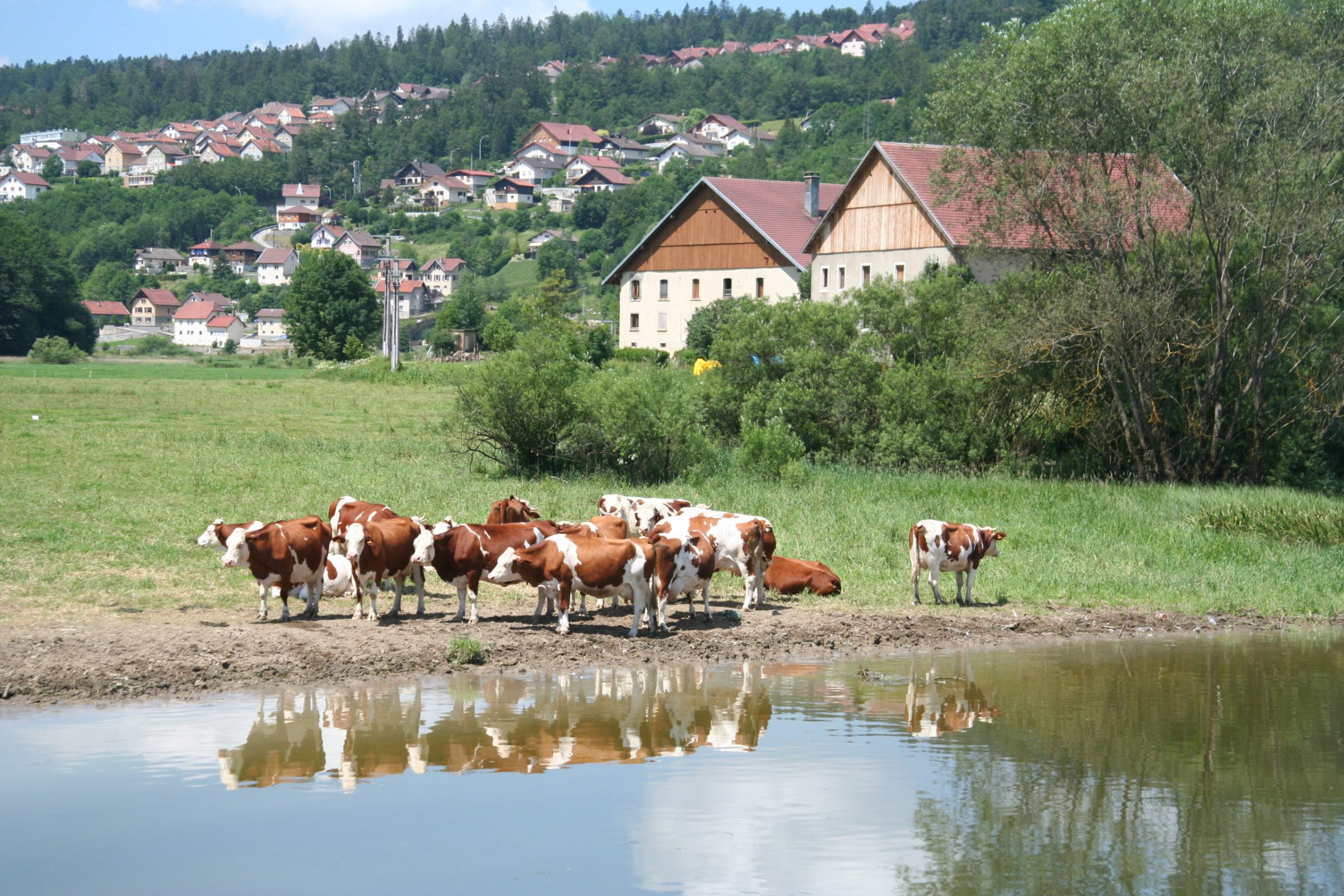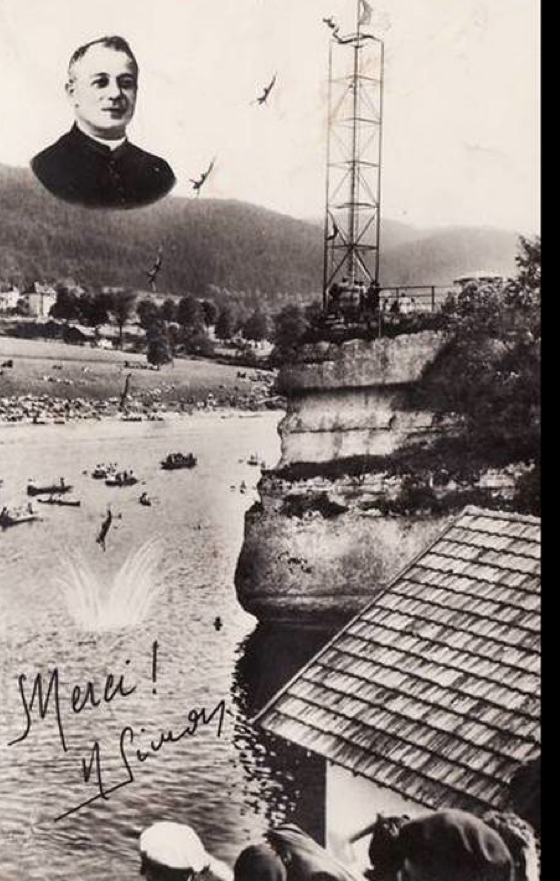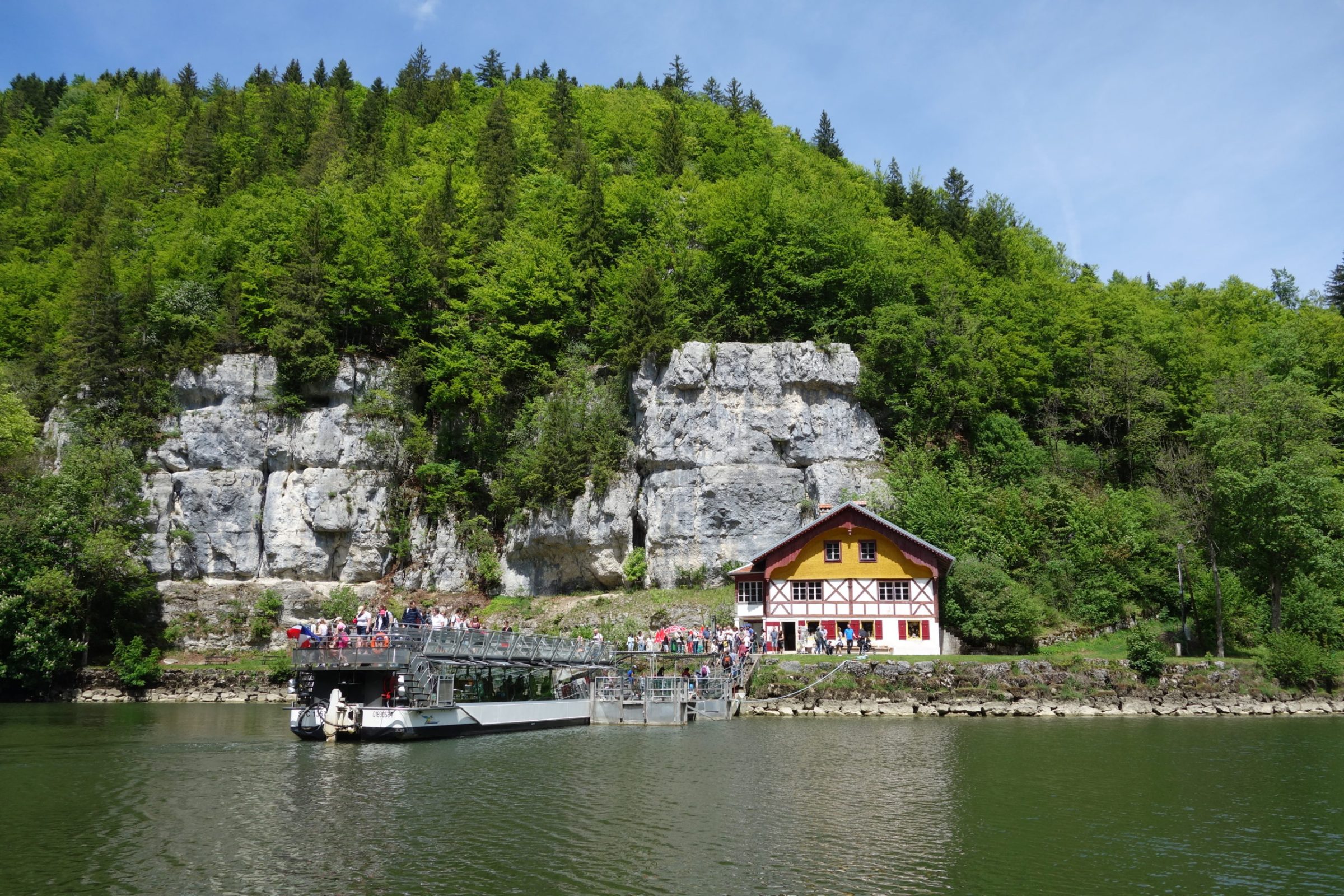
In BLUE:
- Basins, meanders, canyons, lake, landing stage
In GREEN:
- Villages, caves, mountains, rocks
1. Reception Pavilion
Located at the entrance of Villers-le-Lac from Morteau, you will have a large shaded car park, there you will take your tickets for the Sightseeing cruise, find tourist documentation and can buy souvenirs (large variety of Swiss Army knives), cuckoos, postcards, etc.) as well as regional products (Morteau sausages and other smoked products, cheeses, confectionery, chocolates, etc.).

2. Villers-le-Lac
Municipality of 4500 inhabitants, located 750m above sea level in the heart of the Watchmaking Country. The Watch Museum is a few steps from our pier.
3. Typical Franc-Comtoise house
A vast farm where the breeding of Montbéliard cows is practiced, the milk of which will provide Comté, Morbier, Cancoillote or Mont d’Or.

4. Doubs meanders
From Villers-Le-Lac to Lake Chaillexon, the Doubs performs a very pronounced winding, what we call the meanders of the Doubs.

5. Chaillexon
At the end of the winding, the Doubs widens and forms the lake of Chaillexon, from the name of the hamlet to the left of the boat.

6. Col des Roches
The oldest and most important passage between France and Switzerland leading to the Swiss valleys of Locle, Chaux de Fonds, and Neuchâtel.
7. The Brenets
First Swiss village after Villers-le-Lac whose industry is based on watchmaking.

8. Lac de Chaillexon or Lac des Brenets
It is from this lake that the Doubs forms a natural border between France and Switzerland, for around 40 kilometers.
9. Diving
From the rock called ´La Table d´Hercule´, Father Simon came to make his famous dives in the 1950s. Later, Olivier Favre broke the world record for high diving here.

10. Cap Rock
This rock has the shape of a sailor’s cap.
11. Echo Rock
The dates of the main floods of the river appear there, symbolized by a mark with red paint as well as the year when they took place. Impressive!

12. Cave of the Kings of Prussia or La Toffière
The Toffière Cave, also known as the Cave of the Kings of Prussia, has been explored to a depth of 180m, and remains of polar bear bones have been found.
13. The Doubs Basins
Called Grand National Site for the beauty of its landscapes, as well as the First Natural Site of Franche-Comté, the Doubs basins or gorges are four in number. Change of scenery guaranteed!

14. Canyons
Discover striking landscapes in the heart of the canyons, inaccessible other than by boat, surrounded by steep cliffs. Breathtaking!

15. Rock of the Virgin
One can guess, a form of a statue of a mother in the cliff, carrying her child who gave its name to this rock.

16. The Sphinx or Calvin’s Head
Overlooking the water at a height of over 100m, this rock, called the Sphinx (because of its resemblance to the Egyptian monument) is called ´Head to Calvin´ for the Swiss.

17. Landing
When you get off the boat, there is barely 400m by foot to reach the waterfall. You will walk on a landscaped alley to the lookouts.

18. Rapids
The Doubs turns into a torrent before taking the plunge!
19. The Saut du Doubs
Different lookouts allow you to admire the fall of the Saut du Doubs from 27 meters high.
20. The overturned mountain
According to geologists, this mountain which was first on the Swiss side would have overturned in France following an alpine slide. This would have created the fall of the Saut du Doubs, as well as the reservoir of the Doubs Basins. This mountain is also called Mont Chatelard.

